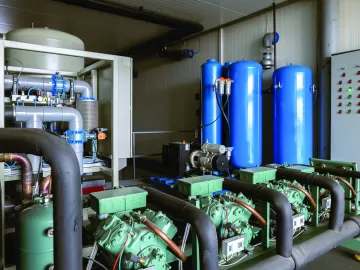Lubricant Chemistry and Oil/Water Separator Performance
Air compressors can produce a lot of water. Humidity in ambient air, once compressed, results in much of this water falling out, which we know as condensate. On a warm and humid summer day with inlet air temperatures of 80°F, a 75-horsepower (hp) air compressor running fully loaded can produce over 25 gallons of condensate in just one eight-hour shift, with another five gallons being produced once the compressed air is sent through a dryer. The compression process allows for the air, water vapor, and lubricating fluids to mix. Once the condensate leaves the system, trace amounts of lubricant travel with it. This condensate should be processed through an oil-water separator before being discharged to groundwater or wastewater treatment plants.




